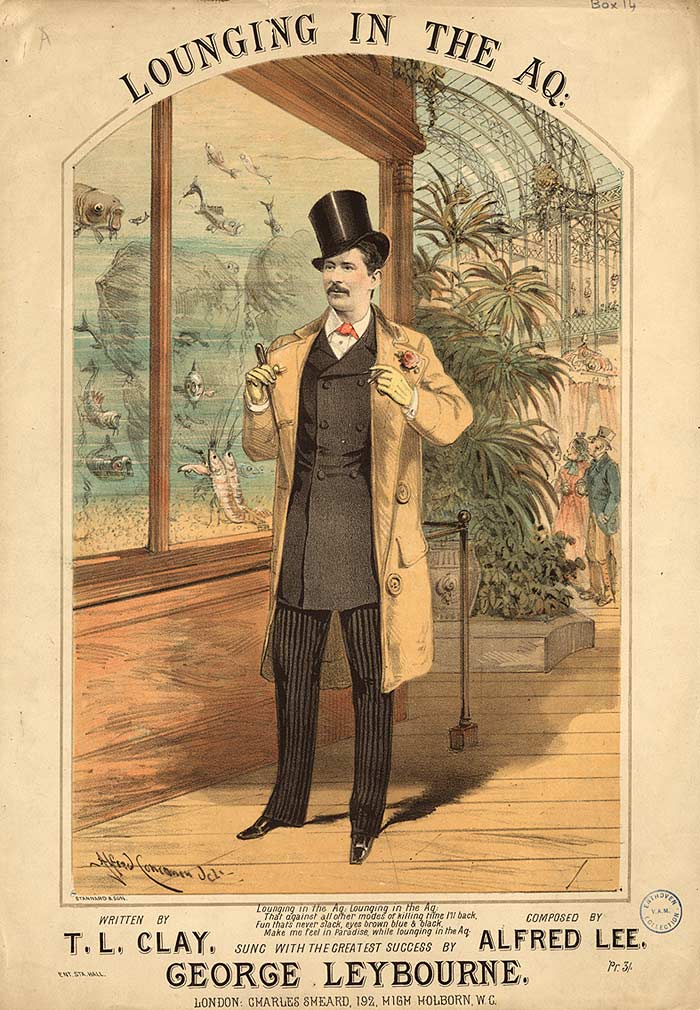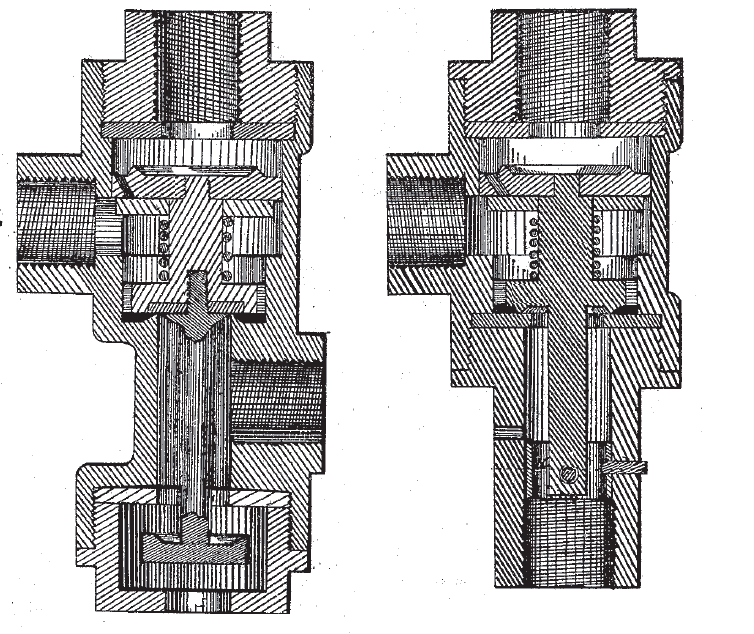|
John Dixon Gibbs
John Dixon Gibbs (1834–1912) was a British engineer and financier who, together with Lucien Gaulard, is often credited as the co-inventor of the AC step-down transformer. The transformer was first demonstrated in 1883 at London's Royal Aquarium. At the time the term "transformer" had not yet been invented, so instead it was referred to as a "secondary generator". Although he is usually credited equally with Gaulard, Gibb's role in the invention appears to have been more that of a financial backer and businessman. Although the underlying physics of the transformer, mainly Faraday's law of induction, had been known since the 1830s, transformers became viable only after the introduction of Gaulard and Gibbs's transformer design in 1883. The breakthrough was to build an iron transformer core which could act as a magnetic circuit. At the time, their invention was seen as overcomplicated since it contained a movable armature. It caught the attention of Sir Coutts Lindsay, who used ... [...More Info...] [...Related Items...] OR: [Wikipedia] [Google] [Baidu] |
Lucien Gaulard
Lucien Gaulard (16 July 1850 – 26 November 1888) was a French engineer who invented devices for the transmission of alternating current electrical energy. Biography Gaulard was born in Paris, France in 1850. A power transformer developed by Gaulard of France and John Dixon Gibbs of England was demonstrated in London, and attracted the interest of Westinghouse. Gaulard and Gibbs first exhibited a device in London in 1881 and then sold the idea to the American company Westinghouse. They also exhibited the invention in Turin in 1884, where it was adopted for an electric lighting system. Many of the features of their design were adapted to the particular laws governing electrical distribution in the UK. In 1882, 1884, and 1885 Gaulard and Gibbs applied for patents on their transformer; however, these were overturned due to actions initiated by Sebastian Ziani de Ferranti and others. In 1885, William Stanley, Jr. built the first practical American transformer based on Gaular ... [...More Info...] [...Related Items...] OR: [Wikipedia] [Google] [Baidu] |
Royal Aquarium
The Royal Aquarium and Winter Garden was a place of amusement in Westminster, London. It opened in 1876, and the building was demolished in 1903. The attraction was located northwest of Westminster Abbey on Tothill Street. The building was designed by Alfred Bedborough in an ornamental style faced with Portland stone. The Aquarium Theatre was located in the west end of the building and was renamed the Imperial Theatre in 1879. Methodist Central Hall now occupies the site. History The Royal Aquarium opened on 22 January 1876. Its board of directors included Henry Labouchère, the financier and journalist; William Whiteley the retailer; and Arthur Sullivan, the composer. It was intended to offer art exhibitions, concerts and plays, among other intellectual entertainments such as The Crystal Palace.''The ... [...More Info...] [...Related Items...] OR: [Wikipedia] [Google] [Baidu] |
Sir Coutts Lindsay
Sir Coutts Lindsay, 2nd Baronet (2 February 1824 – 7 May 1913 Kingston upon Thames), was a British artist and watercolourist. Life Lindsay was the eldest son of Lieutenant-General Sir James Lindsay, son of the Hon. Robert Lindsay, second son of James Lindsay, 5th Earl of Balcarres. His mother was Anne, daughter of Sir Coutts Trotter, 1st Baronet, a principal partner in Coutt's Bank. Robert Loyd-Lindsay, 1st Baron Wantage, was his younger brother. In 1839 he succeeded by special remainder to his maternal grandfather's baronetcy. He then entered the army, commanding the 1st Regiment of the Italian Legion during the Crimean War before retiring from military life to devote himself to art. In the 1871 census, he describes himself as ''artist and dilettante''. From 1862 to 1874 he exhibited many pictures, including various successful portraits. In 1879 he and his first wife, Lady Lindsay (of Balcarres), were both elected to membership of the Institute of Painters in Water C ... [...More Info...] [...Related Items...] OR: [Wikipedia] [Google] [Baidu] |
Grosvenor Gallery
The Grosvenor Gallery was an art gallery in London founded in 1877 by Sir Coutts Lindsay and his wife Blanche. Its first directors were J. Comyns Carr and Charles Hallé. The gallery proved crucial to the Aesthetic Movement because it provided a home for those artists whose approaches the more classical and conservative Royal Academy did not welcome, such as Edward Burne-Jones and Walter Crane. History The gallery was founded in Bond Street, London, in 1877 by Sir Coutts Lindsay and his wife Blanche. They engaged J. Comyns Carr and Charles Hallé as co-directors. Lindsay and his wife were well-born and well-connected, and both were amateur artists. Blanche was born a Rothschild, and it was her money which made the whole enterprise possible. The Grosvenor displayed work by artists from outside the British mainstream, including Edward Burne-Jones, Walter Crane and other members of the Pre-Raphaelite Brotherhood. But it also featured work by others that were widely shown el ... [...More Info...] [...Related Items...] OR: [Wikipedia] [Google] [Baidu] |
Ottó Bláthy
Ottó Titusz Bláthy (11 August 1860 – 26 September 1939) was a Hungarian electrical engineer. During his career he became the co-inventor of the modern electric transformer, the voltage regulator, the AC watt-hour meter, the turbo generator, the high-efficiency turbo generator and the motor capacitor for the single-phase (AC) electric motor. Bláthy's career as an inventor began during his time at the Ganz Works in 1883. There, he conducted experiments for creating a transformer. The name "transformer" was created by Bláthy. In 1885 the ''ZBD'' model alternating-current transformer was invented by three Hungarian engineers: Ottó Bláthy, Miksa Déri and Károly Zipernowsky. (''ZBD'' comes from the initials of their names). In the autumn of 1889 he patented the AC watt-meter. Student paper read on 24 January 1896 at the Students' Meeting. Early life He attended schools in Tata and Vienna, where he obtained diploma of machinery in 1882. Between 1881 and 1883 he ... [...More Info...] [...Related Items...] OR: [Wikipedia] [Google] [Baidu] |
Miksa Déri
Miksa Déri (27 October 1854 in Bács, Austrian Empire – 3 March 1938) was a Hungarian electrical engineer, inventor, power plant builder. He contributed with his partners Károly Zipernowsky and Ottó Bláthy, in the development of the closed iron core transformer and the ZBD model. His other important invention was the constant voltage AC electrical generator in the Ganz Works in 1883. The missing link of a full Voltage sensitive - voltage intensive (VSVI) system was the reliable AC Constant Voltage generator. Therefore, the invention of the constant voltage generator at the Ganz Works had crucial role in the beginnings of the industrial scale AC power generating, because only these types of generators can produce a stated output voltage, regardless of the value of the actual load. ZBD was an abbreviation of the three men's names: Zipernowsky, Bláthy and Déri. Déri is also noted for inventing the single phase type of repulsion motor Education * There is secon ... [...More Info...] [...Related Items...] OR: [Wikipedia] [Google] [Baidu] |
Károly Zipernowsky
Károly Zipernowsky (born as Carl Zipernowsky, 4 April 1853 in Vienna – 29 November 1942 in Budapest) was an Austrian-born Hungarian electrical engineer. He invented the transformer with his colleagues ( Miksa Déri and Ottó Bláthy) at the famous Hungarian manufacturing company Ganz Works and he contributed significantly with his works also to other AC technologies. Biography Zipernowsky, with Ottó Bláthy and Miksa Déri, all of Ganz and Company, were researching ways of increasing efficiency of electrical power transmission. They experimented with power supplies and current transformation, which led to the invention of the ZBD alternating current transformer in 1885. The ZBD system is based on a closed-iron ring core with an arbitrary diameter and a coil around the core, which conducts AC current. Their system converted higher voltage suitable for energy transmission to lower "''service''"-level voltage (step-down transformer). Nikola Tesla Nikola Tesla ... [...More Info...] [...Related Items...] OR: [Wikipedia] [Google] [Baidu] |
George Westinghouse
George Westinghouse Jr. (October 6, 1846 – March 12, 1914) was a prolific American inventor, engineer, and entrepreneurial industrialist based in Pittsburgh, Pennsylvania. He is best known for his creation of the railway air brake and for being a pioneer in the development and use of alternating current (AC) electrical power distribution. During his career, he received 360 patents for his inventions and established 61 companies, many of which still exist today. His invention of a train braking system using compressed air revolutionized the railroad industry around the world. He founded the Westinghouse Air Brake Company in 1869. He and his engineers also developed track-switching and signaling systems, which lead to the founding of the company Union Switch & Signal in 1881. In the early 1880s, he developed inventions for the safe production, transmission, and use of natural gas. This sparked the creation of a whole new energy industry. During this same period, Westinghouse ... [...More Info...] [...Related Items...] OR: [Wikipedia] [Google] [Baidu] |
William Stanley, Jr
William is a masculine given name of Germanic origin. It became popular in England after the Norman conquest in 1066,All Things William"Meaning & Origin of the Name"/ref> and remained so throughout the Middle Ages and into the modern era. It is sometimes abbreviated "Wm." Shortened familiar versions in English include Will or Wil, Wills, Willy, Willie, Bill, Billie, and Billy. A common Irish form is Liam. Scottish diminutives include Wull, Willie or Wullie (as in Oor Wullie). Female forms include Willa, Willemina, Wilma and Wilhelmina. Etymology William is related to the German given name ''Wilhelm''. Both ultimately descend from Proto-Germanic ''*Wiljahelmaz'', with a direct cognate also in the Old Norse name ''Vilhjalmr'' and a West Germanic borrowing into Medieval Latin ''Willelmus''. The Proto-Germanic name is a compound of *''wiljô'' "will, wish, desire" and *''helmaz'' "helm, helmet".Hanks, Hardcastle and Hodges, ''Oxford Dictionary of First Names'', Oxford Un ... [...More Info...] [...Related Items...] OR: [Wikipedia] [Google] [Baidu] |
Sebastian Ziani De Ferranti
Sebastian Pietro Innocenzo Adhemar Ziani de Ferranti (9 April 1864 – 13 January 1930) was a British electrical engineer and inventor who pioneered high-voltage AC power in the UK, patented the Ferranti dynamo and designed Deptford power station. Personal life Sebastian Ziani de Ferranti was born in Liverpool, England. His Italian father, Cesare, was a photographer (son of composer Marco Aurelio Zani de Ferranti) and his mother Juliana de Ferranti (née Scott) was a concert pianist. He was educated at Hampstead School, London; St. Augustine's College, Westgate-on-Sea; and University College London. He married Gertrude Ruth Ince on 24 April 1888 at St Dominic's Priory Hampstead and they had seven children: Zoë Vanda Marie (1889–1978); Basil (1891–1917); Gerard Vincent (1893–1980); Vera Catherine (1898–1993); Yolanda (1902–1919); Denis (1908–1992) and Yvonne Teresa (1913-1988). Ferranti died on 13 January 1930 in Zürich, Switzerland. He was buried at Hampst ... [...More Info...] [...Related Items...] OR: [Wikipedia] [Google] [Baidu] |
1834 Births
Events January–March * January 1 – Zollverein (Germany): Customs charges are abolished at borders within its member states. * January 3 – The government of Mexico imprisons Stephen F. Austin in Mexico City. * January – The Wilmington and Raleigh Railroad is chartered in Wilmington, North Carolina. * February 3 – Wake Forest University is founded as the Wake Forest Manual Labor Institute in Wake Forest, North Carolina. * February 12 – Freed American slaves from Maryland form a settlement in Cape Palmas, it is named the Republic of Maryland. * February 13 – Robert Owen organizes the Grand National Consolidated Trades Union in the United Kingdom. * March 6 – York, Upper Canada, is incorporated as Toronto. * March 11 – The United States Survey of the Coast is transferred to the Department of the Navy. * March 14 – John Herschel discovers the open cluster of stars now known as NGC 3603, observing from the Cape of Good Hope. * March 28 – Andrew J ... [...More Info...] [...Related Items...] OR: [Wikipedia] [Google] [Baidu] |



